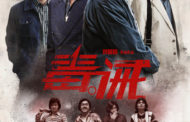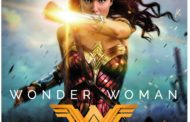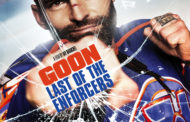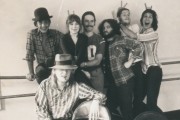 As a critic, I see over a hundred movies a year. Without trying to sound snobby (because it really is the truth), few of the movies that are released are great. Many are terrible. Most fall somewhere in the middle. Sometimes when I have seen a number of bad-to-mediocre films in a row I wonder why I’m willing to spend so many hours of my life as a movie guinea pig. But then a movie like Joon-ho Bong‘s Snowpiercer comes along, full of everything I love about movies, and I realize that it only takes one extraordinary movie every once in a while to make me remember why I love cinema.
As a critic, I see over a hundred movies a year. Without trying to sound snobby (because it really is the truth), few of the movies that are released are great. Many are terrible. Most fall somewhere in the middle. Sometimes when I have seen a number of bad-to-mediocre films in a row I wonder why I’m willing to spend so many hours of my life as a movie guinea pig. But then a movie like Joon-ho Bong‘s Snowpiercer comes along, full of everything I love about movies, and I realize that it only takes one extraordinary movie every once in a while to make me remember why I love cinema.
In fact, I loved Snowpiercer so much that I really don’t want to tell you much about it. I went in the screening knowing only the basic plot details and the controversy surrounding its release (more on that later), which is all I plan on telling you. Snowpiercer takes place in 2031, nearly 18 years after an attempt to reverse global warming backfires and plunges the world into a deep freeze that kills all life. The last survivors on earth live on the Snowpiercer, a train that circles the globe on a continuous track. In the back of the train live a cramped group of dirty survivors led by Curtis (Chris Evans) and Edgar (Jamie Bell). Those at the back of the train resent the people who live more luxurious lives in the front of the train, who are represented by the stern Mason (Tilda Swinton, in a hilariously over-the-top performance that deserves every acting award in existence). Along with the elder Gilliam (John Hurt), Curtis and Edgar come up with a plan to take over Snowpiercer and depose the engineer, Wilford, a mysterious individual who built the train and is spoken about by Mason and the other train-fronters like a benevolent god. Curtis has also been receiving notes from someone ahead that encourage him to lead the revolt against Wilford and the cruel class system of his train. But the first step involves finding Namgoong Minsu (Kang-ho Song), an imprisoned expert on security who can open all of the doors of the train. What’s behind those doors will shock and surprise you, and that’s the best part of Snowpiercer.
What makes Snowpiercer so extraordinary is that like Curtis and his followers the audience doesn’t know what lies ahead in each subsequent train car. On the surface, the basic plot raises all kinds of questions — how does the train continue to run? Where does the food and other supplies come from? Why did such a self-sustaining vehicle happen to exist before the Earth was frozen? However, unlike lesser movies that would sweep such details under the carpet, Snowpiercer answers all of these seemingly far-fetched issues and answers even more questions than you even thought you had.
There was no aspect of Snowpiercer that did not blow me away. The set pieces are incredible, particularly because everything had to be designed as being only ten or so feet across. This made the action sequences tightly filmed and full of jaw-dropping choreography. As Curtis and his group move forward, it’s impossible not to be thrilled with anticipation to find out what they will face next. Nearly every train car brings something unexpected. There is also some worthwhile social commentary here — particularly in Mason’s “be a shoe” speech — that people of all social and political beliefs will connect with. The comparisons to Terry Gilliam‘s Brazil and 12 Monkeys are natural, which makes it unsurprising that John Hurt’s character is named Gilliam.
It’s a credit to Joon-ho Bong that he fought for the film to be released to U.S. audiences in its full length. As we’ve previously reported, The Weinstein Company’s Harvey Weinstein wanted to cut 20 minutes from Snowpiercer and add voiceover narration to make the film more “mainstream.” Of course, this is par for the course with Weinstein (read about his history of cutting movies for U.S. release in our extensive three part series here, here, and here). I literally can’t think of a minute I would cut from the narrative, though I did see a half-dozen mind-blowing sequences that a foolish executive might trim or cut entirely to make it fit more “mainstream” standards. There is also nothing that a voiceover would have done to make the narrative any clearer than it already is. Joon-ho Bong deserves a lot of respect for making sure we saw his original version, even if that means the movie is receiving a much smaller release here in the U.S. Frankly, it’s laughable that The Weinstein Company’s logo still appears at the beginning of the film.
It’s hard to conceive of any Hollywood blockbuster of 2014 being as good as Snowpiercer because there is nothing cliche about it. It breathes life into the dystopian sci-fi genre like masterpieces like Blade Runner, Brazil, and District 9 and sci-fi thrillers like Alien and The Thing before it. There’s a stunning originality on display here that sets Snowpiercer apart from many of the paint-by-numbers sci-fi movies that make it out of Hollywood.
Since I won’t give anything else away about Snowpiercer, all I have left to say is see it as soon as possible. I promise that you will be telling your friends to do the same the moment the credits roll.
Rating: An immediate sci-fi thriller classic that is destined to influence generations of filmmakers (10/10).















Recent Comments